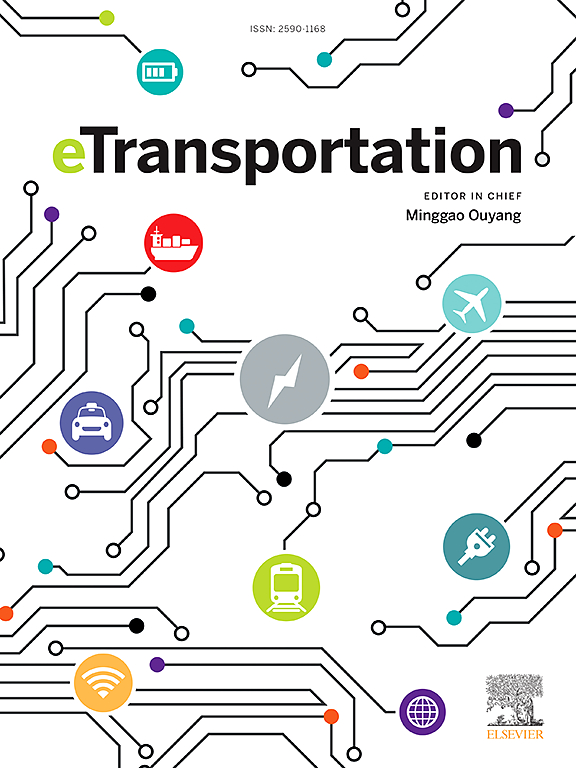Uneven internal SOC distribution estimation of lithium-ion batteries using ultrasonic transmission signals: A new data screening technique and an improved deep residual network
IF 17
1区 工程技术
Q1 ENERGY & FUELS
引用次数: 0
Abstract
Ultrasonic for state of charge (SOC) estimation of lithium-ion batteries has the advantages of non-destructive and real-time. The existing methods mainly depend on single-site detection, which is based on the assumption of uniform SOC distribution. However, the uneven SOC distribution existing inside the cell will cause rapid degradation of local performance, thereby bringing safety risks. Therefore, a novel method combining multi-site detection signals for the uneven internal SOC distribution estimation has been proposed, including Gaussian process regression-active learning (GPR-AL) and deep residual-pooling extreme learning machine (DR-PELM). Firstly, a focused ultrasonic beam is adopted to scan the cell. The preferred sites with lower uncertainty and their signal amplitude of ultrasonic waveform are extracted by GPR-AL. Then, DR-PELM has been established to learn the relationship between ultrasound signal features and SOC, which can reduce the impact of redundant information and noise. Finally, the accuracy of method has been verified through several case studies and destructive tests of lithium-ion detection. The results show that the mean error of general SOC estimation is 2.88 %, and the uneven SOC distribution estimation error is 0.37 %. Thus, the proposed method present good accuracy by integrating multiple selection sites with lower uncertainty and optimizing the network structure.
利用超声传输信号估计锂离子电池内部荷电状态不均匀分布:一种新的数据筛选技术和改进的深度残差网络
超声检测锂离子电池荷电状态具有无损、实时等优点。现有的方法主要依赖于单点检测,这是基于假设有机碳均匀分布。然而,电池内部SOC分布不均匀会导致局部性能迅速下降,从而带来安全隐患。为此,本文提出了一种结合多位点检测信号估计非均匀内部SOC分布的新方法,包括高斯过程回归主动学习(GPR-AL)和深度残差池极端学习机(DR-PELM)。首先,采用聚焦超声束对细胞进行扫描。利用GPR-AL提取超声波形中不确定度较低的优选位点及其信号幅值。然后,建立DR-PELM,学习超声信号特征与SOC之间的关系,减少冗余信息和噪声的影响。最后,通过几个案例研究和锂离子检测的破坏性试验,验证了该方法的准确性。结果表明,一般SOC估计的平均误差为2.88%,不均匀SOC分布估计的平均误差为0.37%。因此,该方法通过整合多个不确定性较小的选择点并优化网络结构,获得了较好的精度。
本文章由计算机程序翻译,如有差异,请以英文原文为准。
求助全文
约1分钟内获得全文
求助全文
来源期刊

Etransportation
Engineering-Automotive Engineering
CiteScore
19.80
自引率
12.60%
发文量
57
审稿时长
39 days
期刊介绍:
eTransportation is a scholarly journal that aims to advance knowledge in the field of electric transportation. It focuses on all modes of transportation that utilize electricity as their primary source of energy, including electric vehicles, trains, ships, and aircraft. The journal covers all stages of research, development, and testing of new technologies, systems, and devices related to electrical transportation.
The journal welcomes the use of simulation and analysis tools at the system, transport, or device level. Its primary emphasis is on the study of the electrical and electronic aspects of transportation systems. However, it also considers research on mechanical parts or subsystems of vehicles if there is a clear interaction with electrical or electronic equipment.
Please note that this journal excludes other aspects such as sociological, political, regulatory, or environmental factors from its scope.
 求助内容:
求助内容: 应助结果提醒方式:
应助结果提醒方式:


